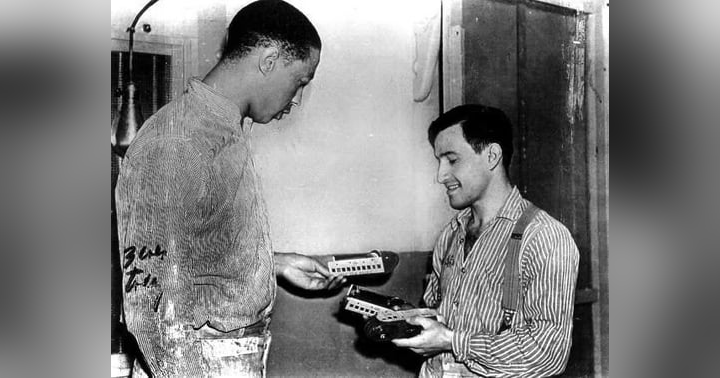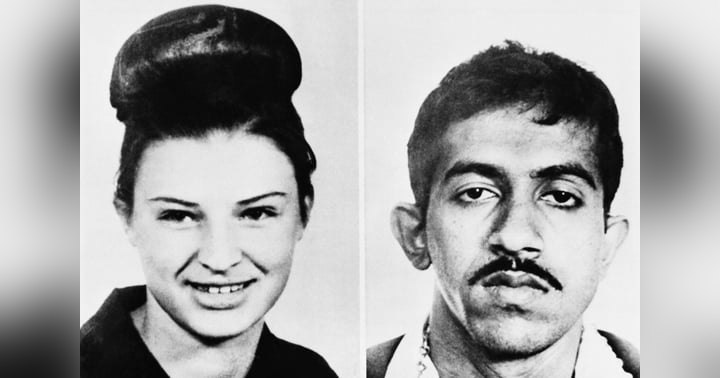Fame, Black Magic, and Murder: The Mona Fandey Story

From Wannabe Pop Star to Spiritual Power Broker: The Reinvention of Mona Fandey
If fame were a currency, Nur Maznah binti Ismail was ready to go bankrupt chasing it.
Born into a modest Malaysian family, she came out of the gate with two things: ambition and flair. As a kid, she dabbled in singing and water ballet, because apparently, walking wasn’t dramatic enough. She wanted the spotlight early, and she wasn’t subtle about it.
By 1987, she rebranded herself with the kind of confidence usually reserved for people who wear sunglasses at night. She picked a stage name, Mona Fandey, and dropped her debut album, Diana, like she was already Malaysia’s next big pop icon. Her husband, Mohamad Nor Affandi Abdul Rahman, was all in. Fully supportive. Possibly delusional. He drained their savings to get Mona airtime on national TV, hoping the exposure would kickstart her music career.
It didn’t.
She had the style, the hair, and the determination. What she didn’t have was sales. Whatever brief flicker of fame she caught fizzled out fast. Malaysia blinked and moved on.
But Mona didn’t.
With her pop star dreams officially stalled, she pivoted into something less glamorous and way more profitable. She and Mohamad started calling themselves bomohs. That’s the Malaysian version of a shaman or spiritual healer. Think ritual magic, folk medicine, and occasionally negotiating with the spirit realm. Need a boost in your career? Need someone else’s to implode? Call a bomoh.
And it turned out, Mona was much better at conjuring power than performing on stage.
Malaysian culture has long held a deep belief in magic, and Mona’s services were in high demand. Politicians, celebrities, even the rich and restless, all started showing up at her door. Some wanted healing. Others wanted favors from the beyond. Some just wanted a shortcut to power.
She didn’t end up a pop star, but she got everything that came with being one. Just through a much darker door.
The Deal That Cost a Politician His Life
Mona Fandey’s client list looked like a Forbes gala with a side of superstition. Wealthy businesspeople came to her hoping she could turn their fortunes from big to obscene. The sick arrived, desperate for healing when hospitals gave up. And politicians? They wanted the kind of help you won’t find in a campaign manual. They came looking for power, and sometimes, to erase a rival or two along the way.
It paid off. Big time.
Mona had mansions across Malaysia, a fleet of expensive cars, closets full of designer clothes, and a taste for five-star hotel living. She might not have cracked the pop charts, but she was living like she had. She built a life that looked exactly like the fame she’d always wanted.
Then came 1993.
A local politician named Mazlan Idris showed up. He had ambition, connections, and enough belief in bomoh magic to try and cheat the political ladder. He’d heard Mona was the real deal, and he wanted in.
After their meeting, Mona and Mohamad offered Mazlan something with serious alleged power—a talisman they claimed had once belonged to the first President of Indonesia. They’d sold things like this before to other clients, so this wasn’t new for them. But this talisman came with a premium price tag: 2.5 million ringgits.
Mazlan didn’t blink. He was a firm believer in the idea that to make money, you had to spend it. He offered 500,000 ringgits, with 300,000 up front. The rest, he said, would come in the form of property.
So the next day, Mazlan crisscrossed Kuala Lumpur, stopping at banks and pulling out wads of cash like he was planning to fund a heist, not fall into one. By that evening, he handed over the money—300,000 ringgits in cash, which at the time was about 120,000 U.S. dollars.
And then? Mazlan vanished.
No goodbye. No press conference. Just gone.
A Disappearance, a Shopping Spree, and a Pit of Secrets
The day after Mazlan Idris vanished, Mona was suddenly everywhere.
She was seen around town spending like she’d just hit the spiritual jackpot. She bought luxury clothes, a brand-new car, a phone, a TV, and an entire set of furniture, right down to custom kitchen cabinets. Then, because nothing says subtle like cosmetic surgery, she checked herself into a hospital for a facelift and a nose job.
But the shopping spree didn’t last long.
Their assistant, Juraimi Hassan, was picked up on unrelated drug charges. During questioning, he dropped a confession that spun the whole case sideways. He told investigators to check out one of Mona and Mohamad’s many properties.
There, buried beneath a pit covered in cement, they found what was left of Mazlan Idris.
His body had been dismembered into eighteen pieces. Parts of his skin had been removed. Several organs were missing, including his testicles. He had died from a sharp blow to the neck.
Soon after, Mona, Mohamad, and Juraimi were all arrested for Mazlan’s murder.
When investigators searched the rest of Mona and Mohamad’s properties, they made more disturbing discoveries. A dead family. Another woman. Several jars filled with preserved human organs. None of it could be conclusively tied to Mona or Mohamad, but the theory was clear. These weren’t just murders. They may have been ritual sacrifices, possibly offered up in exchange for power or protection. But proving that in court was another story.
So authorities focused on the one case they could prove. Mazlan.
At trial, Juraimi testified against the couple. He said Mona and Mohamad had orchestrated the entire thing. According to him, Mazlan showed up with the money, expecting a ceremony that would bring him wealth beyond imagination.
Mona told Mazlan to lie down on the floor. She placed an orchid on his forehead and told him to close his eyes. At some point, a voice would ask how much money he wanted. If the magic worked, the cash would appear.
Mazlan believed her. He closed his eyes and waited.
What he didn’t know was that behind him, Juraimi stood with an axe.
He struck three times, severing Mazlan’s head. Mona and Mohamad then told Juraimi to dismember the body while they went off to wash the blood off in the shower.
Mohamad’s version of events was, let’s say, different.
First, he claimed Mazlan owed him over two million ringgits for a magical cane. Not a joke. A literal cane. Then, he changed direction.
Now it was all Juraimi. According to Mohamad, he and Mona were just doing the ceremony like normal when Juraimi suddenly attacked Mazlan out of nowhere. They were shocked. Scared. They ran. Too traumatized to call the police. Too confused to tell anyone.
But somehow, not too traumatized to spend the victim’s money on luxury goods the very next day.
The serial numbers on the banknotes traced directly back to the cash Mazlan had withdrawn.
And the courtroom started to look a lot less like a mystery, and a lot more like a closing argument.
Mona Fandey Wanted Fame. She Got It.
Mohamad stuck to his story. According to him, he and Mona had no intention of hurting Mazlan. The plan, he said, was to perform the ceremony as promised. But then, out of nowhere, Juraimi snapped. He claimed their assistant stormed in and hacked Mazlan to death with an axe while they stood there in shock.
Terrified for their own lives, Mohamad said, they ran. Not to the police. Not to the neighbors. Just away. Because apparently, nothing screams innocence like abandoning a crime scene and immediately going shopping.
And that part is verifiable. The banknotes Mazlan withdrew were the same ones Mona used to fund her luxury spree in the days after he went missing.
Mona never took the stand. She never tried to explain herself. But she did make sure people were watching.
The murder of a high-profile politician had finally made her famous, and she was soaking it up like stage lights. She dressed to be noticed. She smiled like she was posing for an album cover. And during one court appearance, she turned to reporters and said, “Looks like I have many fans.”
It was bizarre. She wasn’t just on trial for murder. She was performing.
Through the whole process, Mona stayed silent on the details. She denied the charges but didn’t argue the evidence. Her only complaint was that prison guards had pressed too hard on her facelift stitches to force a confession. That was it.
Everything else? She reserved for the cameras. Smiling. Waving. Posing like she was on a red carpet, not sitting in the defendant’s chair at a capital murder trial.
When the guilty verdict came down, Mona didn’t flinch. Even as the judge handed her a death sentence, she kept smiling.
Outside the courtroom, she thanked Malaysians. Then she blew kisses to the crowd while she, Mohamad, and Juraimi were escorted to death row.
They appealed the decision, but it didn’t work. On the morning of November second, 2001, all three were brought to the gallows.
Black hoods. Tied legs. No last-minute theatrics. Just a final smile from Mona and the words, “I will never die.”
Their bodies were left hanging for an hour, as required, before being taken down and buried.
Afterward, Datin Faridah Zainuddin, Mazlan Idris’ widow, told the press she could finally put the past to rest. The people who had taken her husband were gone.





